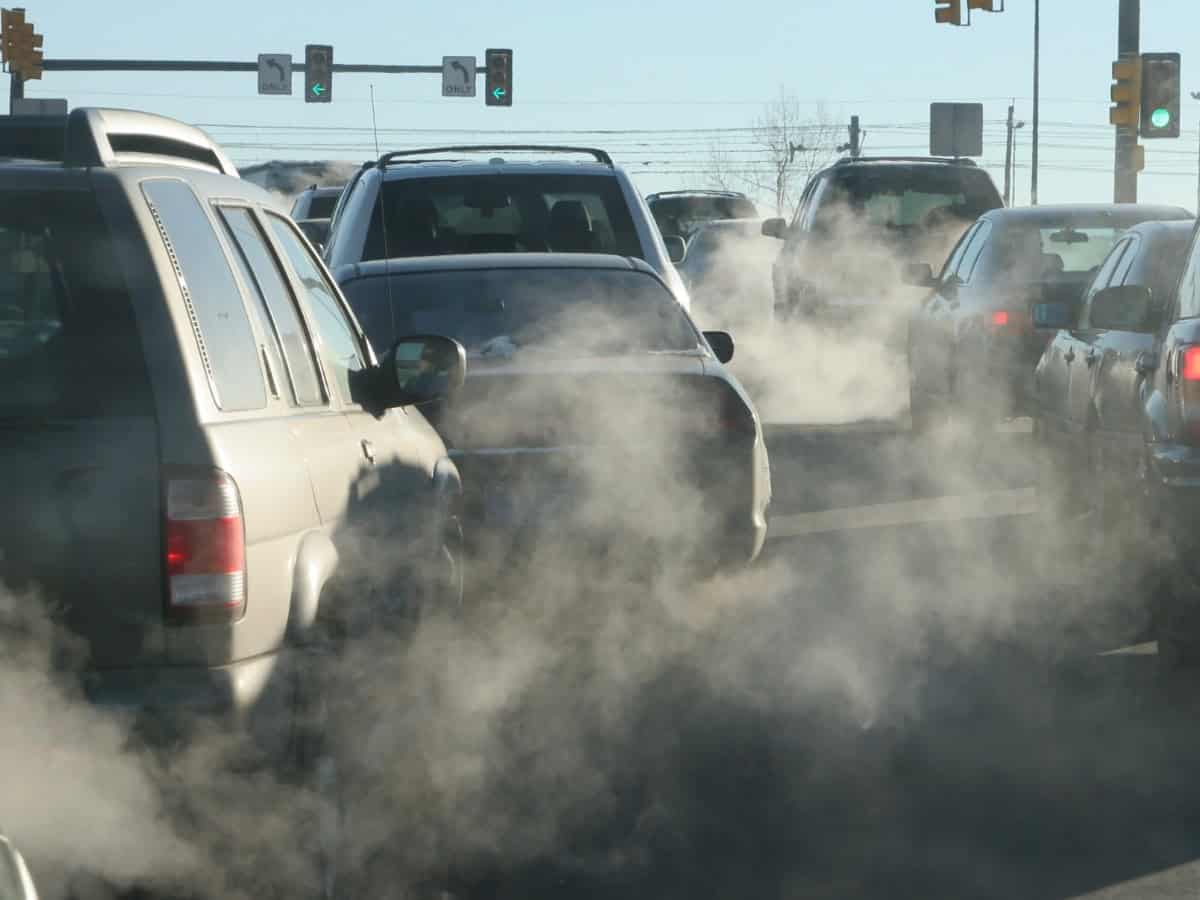
Hyderabad: As air pollution remains a growing concern among citizens, road transport remains the second largest source of Nitrogen Dioxide (NO2) emissions in Hyderabad, contributing 24 percent of the total emissions, according to Emissions Database for Global Atmospheric Research as mentioned in the Green Peace India report.
In 2023, nine out of 14 air quality monitoring stations in Hyderabad recorded annual average NO2 concentrations exceeding the World Health Organization’s (WHO) health-based guidelines. The station at Central University in Hyderabad had the highest levels, surpassing even India’s national standards. This station exceeded WHO’s daily average NO2 guideline for over 80 percent of the year.
Other high-risk areas include locations near the zoo and a high school, exposing students to potential health risks. According to a study in 2019 by Achakulwisut, he estimated that NO2 pollution contributed to 2,430 pediatric asthma cases in Hyderabad in 2015.
Despite a decreasing city-average trend in NO2 levels, six monitoring stations have shown worsening trends over the past five years. Satellite data from 2019-2023 suggests an overall increase in NO2 pollution across the city.
What is NO2?
As NO2 levels continue contributing to rising levels of pollution in Hyderabad, it is essential to understand where it is produced and its impact on health and the environment. Nitrogen Dioxide (NO2) is a reddish-brown gas that is a significant air pollutant, primarily produced from the combustion of fossil fuels, such as in vehicles and industrial processes such as power plants and factories are also significant contributors.
These industries rely on fossil fuels which release NO2 during combustion. In addition, agriculture can indirectly contribute to NO2 emissions through the use of nitrogen-based fertilizers. Even natural sources, such as volcanic eruptions and lightning, release small amounts of NO2.
The emission of NO2 plays a role in climate change by contributing to the formation of greenhouse gases such as ozone. This traps heat in the atmosphere and accelerates global warming.
Increasing NO2 pollution in Hyderabad poses threat to physical, mental well-being
A 25-year-old doctor who worked as a casualty medical officer at Indo US Hospital explained to Siasat.com that “NO2 pollution in Hyderabad is highly detrimental to respiratory health. Short-term exposure can cause irritation in the airways which leads to coughing, wheezing, or difficulty breathing. Many studies show prolonged exposure is linked to chronic respiratory conditions like asthma, reduced lung function and an increased risk of respiratory infections.”
He further stated that especially children are at risk because their lungs are still developing and they often breathe more air relative to their body weight compared to adults.
A 32-year-old counselling psychologist in Hyderabad, Zainab, said that exposure to high levels of pollution including the rise in NO2 has been linked to increased risks of anxiety, depression, and even cognitive impairment.
She further explained that excessive NO2 can react with other molecules to form reactive nitrogen species (RNS), causing oxidative stress within the brain which can damage neurons. Studies suggest a link between NO2 exposure and increased risk of neurodegenerative diseases like Alzheimer’s and Parkinson’s due to its inflammatory effects on the brain.

